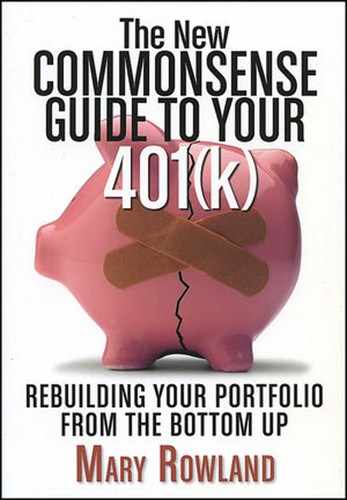YOUR 401(K) PLAN PROBABLY does not offer an option for investing in gold. Still, because gold was talked up so much after the 2008-2009 market crash, and because investors in gold seem to be the only ones who didn't lose their shirts, you may be curious about gold as an investment.
Here's the story behind gold: Gold has its own fan club, a group of fervent believers dubbed "goldbugs," who think it is the only true source of value and the time is always right to own it, no matter what time it is. Reality doesn't support this notion. The price of gold was fixed at $35 an ounce in the U.S. from 1934 to 1971. Individuals were prohibited from owning it. When the fixed price was lifted, the price tripled in only two years. In 1974, the ban against private ownership was also lifted and private speculation drove the price still higher, to about $200 an ounce. The price fell back to the $170 range until the roaring inflation of the 1970s when it skyrocketed, hitting $875 an ounce on January 21, 1980. When inflation cooled, the prince of gold dropped back to the $300 to $500 range.
But the price has been rising since 2006, probably because of investor worries about inflation and a falling dollar. Gold first broke through the $1,000 per ounce level in March 2008 and then again in February 2009. It traded above $1,000 an ounce again on September 8, 2009, but dropped back below $1,000 at the day's close.
As this history shows, the price of gold is volatile and largely unpredictable. It is not a growth investment, like stocks or real estate, which increase gradually, albeit unpredictably, over time. In fact, there is an old saw that throughout history an ounce of gold would buy a decent man's suit. During Roman times, it bought a toga. And more recently, it bought a decent business suit. That doesn't bode much for it as a long-term investment strategy.
But gold can make a good hedge against expectations about rising inflation and a falling dollar. Because of the uncertainty in the market in 2008 and 2009, many investors moved to gold, or made a flight to safety. In 2009, some financial advisors recommended gold for a small part of an investor portfolio (approximately 5 percent).
Below is a graph that compares an investor who put $1,000 into gold at the beginning of 1999 to one who put $1,000 into stocks as measured by the Standard & Poor's 500 Index.
Dec 31, | S&P 500 | Gold bullion |
|---|---|---|
1999 | $1,195.30 | $1,005.37 |
2000 | $1,074.97 | $944.07 |
2001 | $944.56 | $957.40 |
2002 | $720.23 | $1,186.80 |
2003 | $897.11 | $1,444.76 |
2004 | $976.33 | $1,508.30 |
2005 | $1,022.02 | $1,776.30 |
2006 | $1,155.09 | $2,201.16 |
2007 | $1,209.03 | $2,896.45 |
2008 | $731.10 | $3,105.16 |
What does it mean? It means that the past ten years were a much better time to be invested in gold than in stocks. Had I looked instead at the prior ten years, stocks would have done much better than gold. So there is a case for incorporating gold as a small part of a diversified portfolio.
